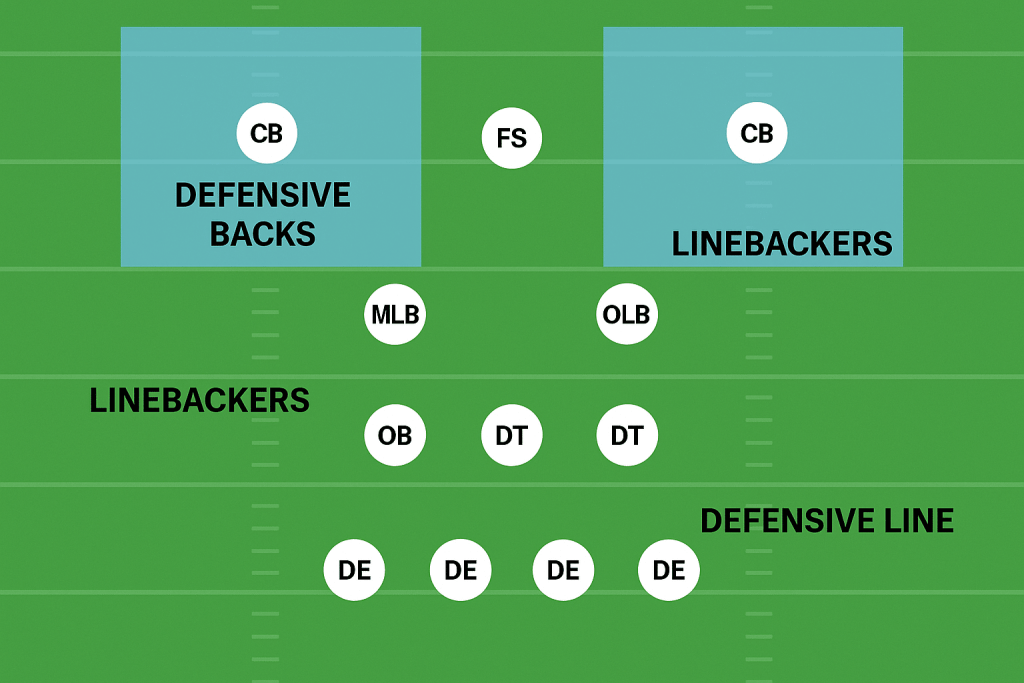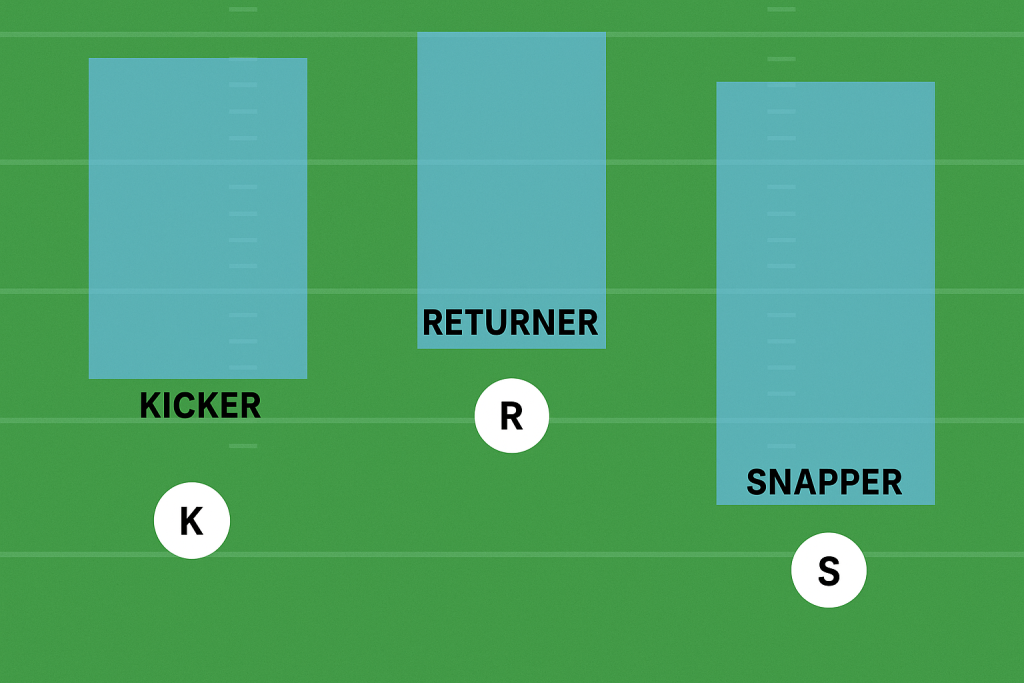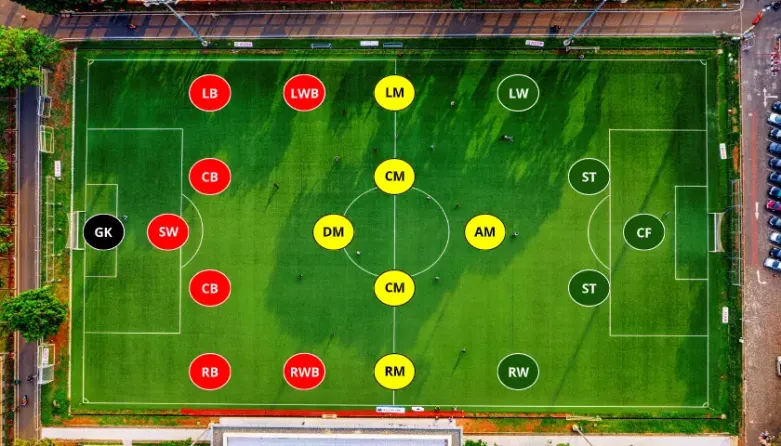If you’re new to football and feel overwhelmed by the number of players and their roles on the field, you’re not alone. Football might look chaotic at first, but each player has a specific job that contributes to the team’s strategy. In this beginner-friendly guide, we’ll break down football positions with easy-to-understand diagrams and explanations for every role—offense, defense, and special teams.

1. Offensive Positions in Football
The offense is the team with the ball, trying to score points. Let’s look at their core positions:
🏈 Quarterback (QB)
- Role: The leader of the offense. They throw passes, hand off the ball, or run it themselves.
- Key Skills: Decision-making, accuracy, leadership.
Running Back (RB)
- Role: Runs the ball, blocks, and sometimes catches passes.
- Types:
- Halfback (HB) – main runner.
- Fullback (FB) – stronger, used for blocking or short runs.
Wide Receiver (WR)
- Role: Catches passes from the quarterback.
- Key Skills: Speed, route running, catching.
Tight End (TE)
- Role: A mix of blocker and receiver.
- Key Skills: Strength and catching ability.
Offensive Line (OL)
- Roles: Protect the quarterback and create paths for the runner.
- Left/Right Tackle (LT/RT)
- Guard (LG/RG)
- Center (C) – also snaps the ball to the quarterback.
Diagram Idea: A labeled offensive formation showing QB, RB, WR, TE, and OL.
2. Defensive Positions in Football
The defense tries to stop the offense from scoring.
Defensive Line (DL)
- Role: Rush the quarterback and stop running plays.
- Defensive Tackles (DT)
- Defensive Ends (DE)
Linebackers (LB)
- Role: Versatile—cover the run, defend against the pass, or blitz the QB.
- Middle Linebacker (MLB) – team leader.
- Outside Linebackers (OLB) – cover passes and set the edge.
Cornerbacks (CB)
- Role: Defend against wide receivers and intercept passes.
Safeties (FS/SS)
- Role: Last line of defense; cover deep passes and support run defense.
- Free Safety (FS) – covers deep routes.
- Strong Safety (SS) – tackles and covers short/mid-range.
Diagram Idea: Defensive alignment diagram with zones and positions.
3. Special Teams

Special teams come in during kicks, punts, and returns.
Kicker (K)
- Kicks field goals and extra points.
Punter (P)
- Kicks the ball downfield on 4th down.
Kick Returner / Punt Returner
- Catches and runs back kicks and punts.
Long Snapper
- Snaps the ball for punts and field goals.
Diagram Idea: Kickoff formation highlighting special team roles.
4. Common Formations and Strategies
Understanding formations can help you spot player roles more easily:
- 4-3 Defense: 4 DLs, 3 LBs – good balance.
- 3-4 Defense: 3 DLs, 4 LBs – better for blitzing.
- Spread Offense: More WRs, focuses on passing.
- I-Formation: Strong run formation.
5. Tips for Remembering Football Positions
- Focus on what each side wants to do: score (offense), stop scoring (defense).
- Watch replays and pause to spot player roles.
- Use color-coded diagrams to help visualize each position.
Conclusion
Football becomes much more exciting once you understand each player’s job. From the quarterback making plays to linebackers stopping runs, every role matters. Use the diagrams, watch a few games, and soon, you’ll talk football like a pro!

